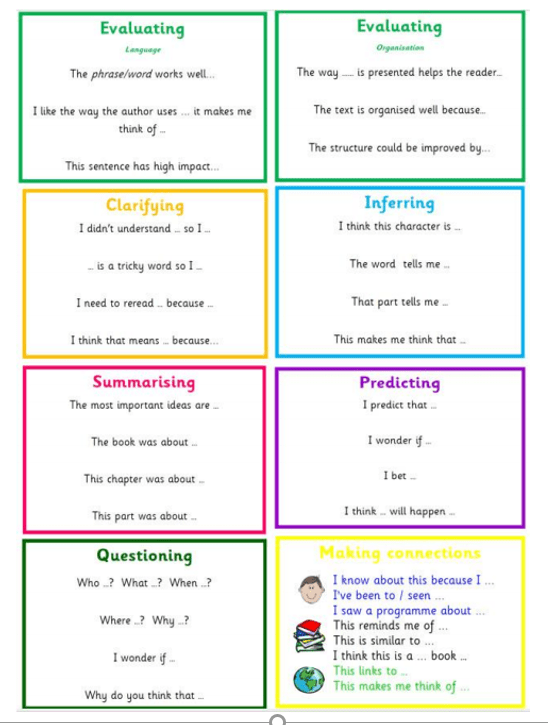Reading
The Reading Curriculum at Brentfield:
The development of children’s reading is crucial to their success across the curriculum and beyond therefore at Brentfield Primary School we intend for all of our children to leave the school as confident and evaluative readers. We want to ensure that all our children become lifelong passionate readers who read a range of different content for a variety of purposes: pleasure, research, developing their knowledge and understanding of the world around them, entertainment etc.
Reading begins in the Early Years through Read Write Inc. and continues into Key Stage 1 with Daily Supported Reader. Children progress through the reading bands, with each book level introducing new reading and comprehension skills. There is an emphasis on children learning to decode through daily phonics teaching and developing their sight vocabulary for common exception words.
Read at Home with an Author
Click the links below to hear different authors read their own stories.
Online Stories Yr 1-2 (5 -7yr olds)
Online Stories Yr 3-4 (7-9 yr olds)
Online Stories Yr 5-6 (9-11 yr olds)
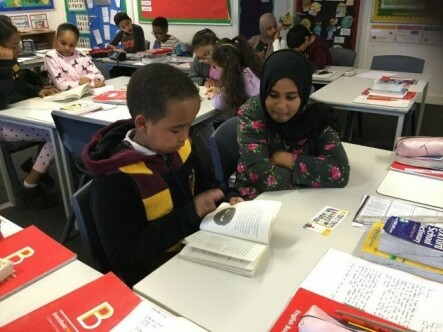
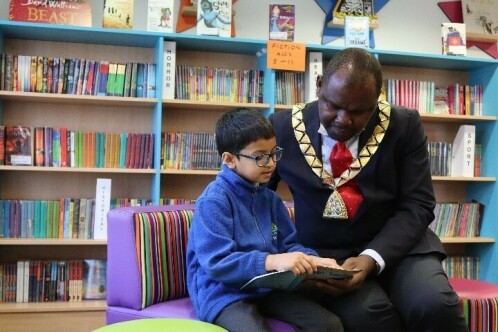
Phonics
At Brentfield Primary School, we use the lively synthetic phonics programme ‘Read, Write, Inc. Phonics’ to ensure we get our children reading and writing quickly. RWI supports children’s reading as they learn the English alphabetic code: first they learn one way to read the 40+ sounds and blend these sounds into words (set 1 and 2 sounds), then learn to read the same sounds with alternative graphemes (set 3 sounds).
Phonic books are matched to their phonics knowledge so they can apply their phonics to help them read the words and improve their fluency.
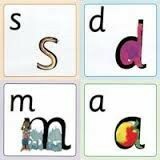


When using RWI Phonics to read the children will:
- Learn that sounds are represented by written letters
- Learn 44 sounds and the corresponding letter/letter groups using simple picture prompts
- Learn how to blend sounds
- Learn to read using Fred Talk
- Read lively stories featuring words they have learned to sound out
- Show that they comprehend the stories by answering questions
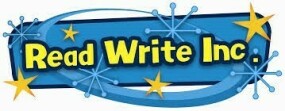
|
Area |
Link |
|
What is RWI? |
https://www.ruthmiskin.com/en/find-out-more/parents/#lg=1&slide=1 |
|
How to say sounds |
https://www.ruthmiskin.com/en/find-out-more/parents/#lg=1&slide=2 |
|
Reading the stretchy sounds with your child. |
https://www.ruthmiskin.com/en/find-out-more/parents/#lg=1&slide=6 |
|
Reading the bouncy sounds with your child. |
https://www.ruthmiskin.com/en/find-out-more/parents/#lg=1&slide=7 |
|
Reading the diagraphs with your child |
https://www.ruthmiskin.com/en/find-out-more/parents/#lg=1&slide=8 |
|
Sound blending |
https://www.ruthmiskin.com/en/find-out-more/parents/#lg=1&slide=10 |
|
Red Ditty Books |
https://www.ruthmiskin.com/en/find-out-more/parents/#lg=1&slide=15 |
|
The phonics screening check |
https://www.ruthmiskin.com/en/find-out-more/parents/#lg=1&slide=4 |
Reading
In Nursery, Reception Year 1 and Year 2, when children are ready, they take part in the Daily Supported Reading (DSR) programme. DSR is a quality first teaching programme that ensures sustained independent reading opportunities for children in EYFS and KS1.
Each child in the programme receives a daily 25-minute reading lesson at their instructional level, taught by a teacher or trained adult. Children are grouped by reading attainment level using PM Benchmarks, and there are no more than six children in each group.
In Year 3, Year 4, Year 5 and Year 6, we use Destination Reader (DR) to teach reading to our pupils. DR builds on the skills that children have learnt in DSR. It is an approach to teaching reading in KS2 that involves daily sessions incorporating whole class modelling prior to the children applying a series of strategies they have learnt through partner work and independent reading using language stems to help them articulate their ideas clearly.
Firstly, children are introduced to three key learning behaviours, which foster both engagement and independence.
Learning Behaviours
Support and actively listen to others
Discuss and explain their ideas
Take responsibility for their own and their groups learning
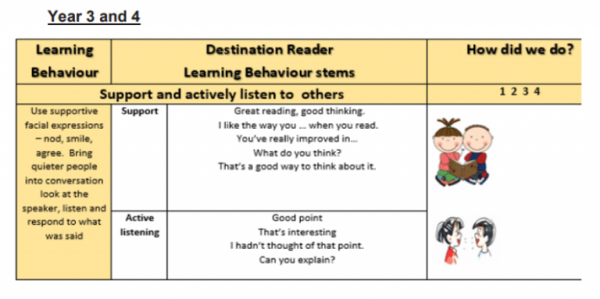
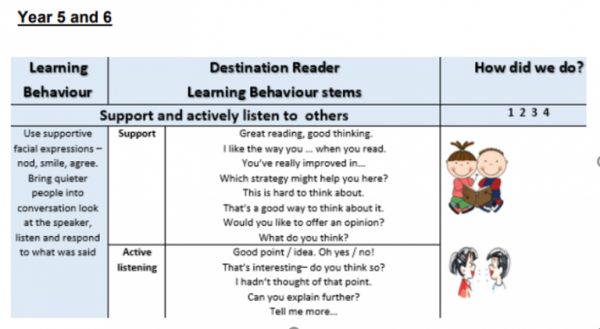
Once these learning behaviours have been embedded, the children learn seven key reading strategies in turn which help them deepen their understanding of texts.
Reading Strategies
Predicting, Inferring, Asking questions, Evaluating, Clarifying, Making connections and Summarising
